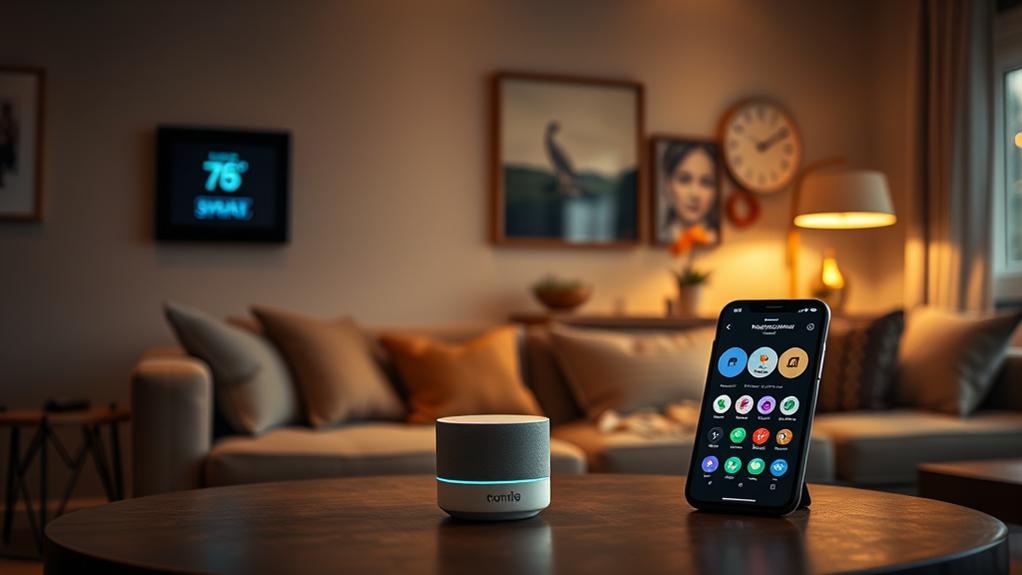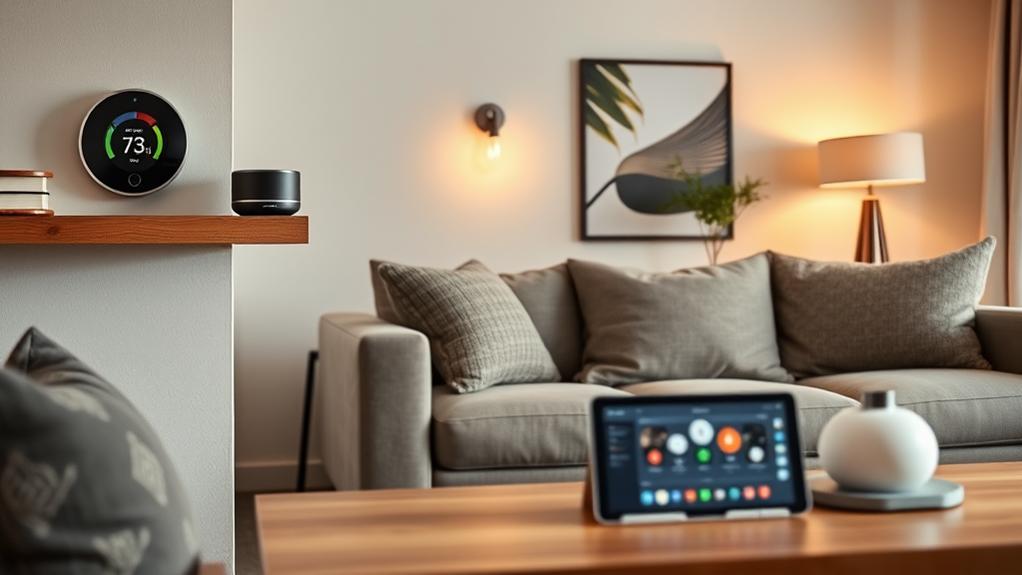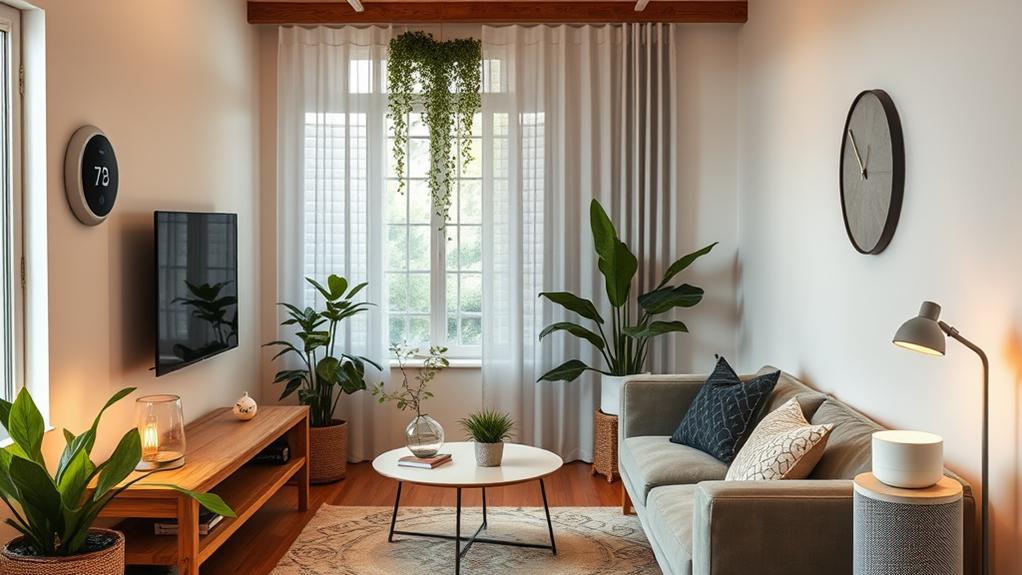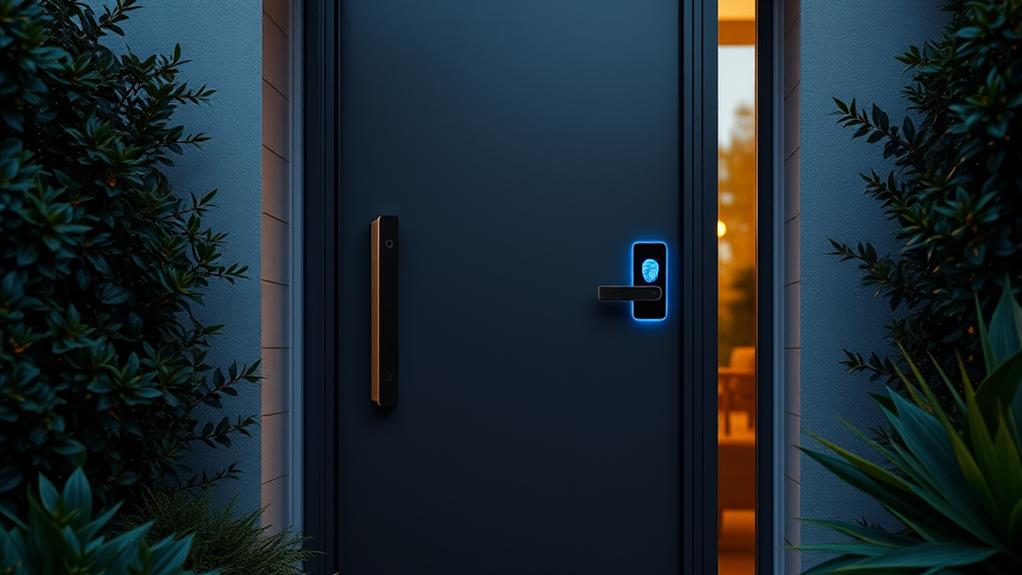Imagine stepping into a home that anticipates your every need, like a well-trained butler ready to serve. Automating your home can transform your daily routine, offering convenience, security, and even a little extra peace of mind. But where do you start? With a growing array of smart devices and technologies, it can feel overwhelming. Understanding the essential components and how they work together is key, and that's just the beginning of what you need to know to make your home smarter.
Benefits of Home Automation
Home automation offers numerous advantages that can greatly enhance your daily life. Imagine walking into your home, and the lights automatically turn on, creating a welcoming atmosphere. You can easily set the thermostat to your preferred temperature before you arrive, guaranteeing comfort without wasting energy.
One of the key benefits is convenience. With smart devices, you can control various aspects of your home from your smartphone or tablet, whether you're on the couch or halfway around the world. This level of control allows you to manage your home efficiently and effectively.
Security is another significant advantage. Home automation systems enable you to monitor your property in real-time, receiving alerts if anything seems amiss. You can also remotely lock doors or view live camera feeds, providing peace of mind when you're away.
Moreover, home automation can save you money. By optimizing energy usage, you can reduce your utility bills. Automated lighting and heating systems guarantee that you're not wasting resources, allowing you to enjoy both comfort and savings.
In short, embracing home automation can improve your lifestyle, making your home safer, more energy-efficient, and incredibly convenient.
Essential Smart Devices
A variety of essential smart devices can transform your living space into an efficient and comfortable environment.
First, consider smart speakers like Amazon Echo or Google Nest Hub. They not only play music but also serve as voice-controlled assistants, managing your schedule and controlling other devices with simple commands.
Next, smart lighting systems, such as Philips Hue, let you customize your home's ambiance. You can adjust brightness, color, and even set schedules to enhance energy efficiency.
Smart thermostats, like the Nest Learning Thermostat, learn your preferences and adjust heating and cooling automatically, saving you money on energy bills.
Don't overlook smart security devices, including doorbell cameras and smart locks. These enhance your home's safety by allowing you to monitor entry points and control access remotely.
Smart plugs are another great addition; they convert any regular appliance into a smart device, enabling you to control it from your smartphone or set schedules.
Lastly, consider smart appliances like refrigerators and washing machines that offer convenience and efficiency.
Choosing the Right Hub
Selecting the right hub is key to maximizing the potential of your smart home devices. The hub acts as the central command for all your smart gadgets, allowing them to communicate and work together seamlessly.
When choosing a hub, consider compatibility first. Not all hubs support every device, so check which brands and protocols—like Zigbee, Z-Wave, or Wi-Fi—are compatible with your devices.
Next, think about the features you need. Some hubs offer advanced automation options, while others provide basic control. If you're looking for voice control, verify your hub integrates with platforms like Amazon Alexa or Google Assistant.
User-friendliness is also important; you want a hub that's easy to set up and manage.
Consider the security features as well. A hub with robust security measures can help protect your personal data and devices from potential threats.
Setting Up Your System
Once you've chosen your hub, it's time to plunge into setting up your system. Start by placing your hub in a central location within your home. This guarantees it can communicate effectively with all your devices. Plug it in and connect it to your Wi-Fi network, following the manufacturer's instructions on how to access the app or dashboard.
Next, download the app associated with your hub. Open it, and create an account if you haven't already. The app will guide you through the setup process, prompting you to add devices. Make sure each device you want to connect is powered on and in pairing mode. This usually involves pressing a button on the device until a light blinks.
As you add devices, categorize them in the app for easy access later. Grouping by rooms or functions can simplify control. Don't forget to name each device clearly—this makes it easier to manage them using voice commands or within the app.
Integrating Different Technologies
Integrating various technologies in your home automation setup can greatly enhance convenience and functionality. You'll want to start by selecting devices that communicate seamlessly with one another. Look for products that use common standards, like Zigbee or Z-Wave, to guarantee compatibility.
Smart hubs play an essential role in this integration process. By connecting multiple devices to a single hub, you can control everything from lights to thermostats with just one app or voice command.
It's also important to check for software updates regularly, as manufacturers often release improvements that enhance compatibility.
Consider using platforms like Amazon Alexa or Google Assistant. These voice assistants allow you to create routines that automate daily tasks, like turning off lights when you leave home or adjusting the thermostat as you wake up.
Don't forget about interoperability between different brands. Many smart home devices now support IFTTT (If This Then That), which lets you create custom automations across various platforms.
Security and Privacy Considerations
Home automation can offer incredible convenience, but it also raises important security and privacy concerns that you shouldn't overlook. As you integrate smart devices into your home, it's essential to reflect on how they'll impact your personal data and security.
Here's a quick overview of key security and privacy considerations:
| Consideration | Description | Tips |
|---|---|---|
| Device Security | Verify devices have strong passwords and updates. | Change default passwords; enable 2FA. |
| Data Encryption | Confirm data is encrypted during transmission. | Look for devices with AES encryption. |
| User Access Control | Manage who can access your devices. | Limit access to trusted users only. |
| Network Security | Secure your home Wi-Fi network. | Use strong passwords; employ a guest network. |
| Privacy Policies | Understand how your data is used. | Read privacy policies before purchasing. |
Cost-Effective Automation Solutions
Cost-effective automation solutions frequently provide a way to enhance your living space without breaking the bank. You don't need to invest in an expensive, fully integrated smart home system to enjoy the benefits of automation.
Start small by considering smart plugs and light bulbs. These devices allow you to control your lights and appliances remotely, and they often come at a reasonable price.
Next, look into smart thermostats. They can help you save on energy bills while keeping your home comfortable. Many models learn your schedule and adjust temperatures accordingly, which means you're not wasting energy when you're away.
Don't overlook DIY options, either. Platforms like Raspberry Pi or Arduino offer affordable alternatives for tech-savvy individuals wanting to create custom automation solutions. You can set up sensors for motion detection, temperature monitoring, or even automate your garden watering system.
Lastly, explore subscription services that bundle several devices together at a discount. By combining your purchases, you can stretch your budget further while still enjoying a smarter home.
With these cost-effective options, you can start automating your home without straining your wallet.
Future Trends in Smart Homes
As technology evolves, smart homes are set to become even more intuitive and user-friendly.
You'll likely see advancements in artificial intelligence, allowing your home systems to learn from your habits and preferences. Imagine a home that anticipates your needs, adjusting lighting, temperature, and even suggesting meals based on your dietary choices.
Voice-activated systems will become more sophisticated, enabling you to control all devices with simple commands.
Integration with wearable technology will also become common, allowing your home to sync with your health data, providing reminders to take medication or suggesting relaxation techniques when stress levels are high.
Another trend to watch for is increased emphasis on energy efficiency.
Smart appliances will optimize their usage based on your routines, helping you save on energy bills and reduce your carbon footprint.
Additionally, enhanced security features will emerge, utilizing facial recognition and smart alerts to keep your home safe.
Conclusion
To summarize, automating your home not only boosts convenience and security but can also save you money. Did you know that smart thermostats can cut your energy bills by up to 10-15%? By investing in smart devices and setting up an efficient system, you'll enjoy a more comfortable living environment while contributing to energy savings. Embrace the future of home automation and transform your space into a smart haven that works for you!











